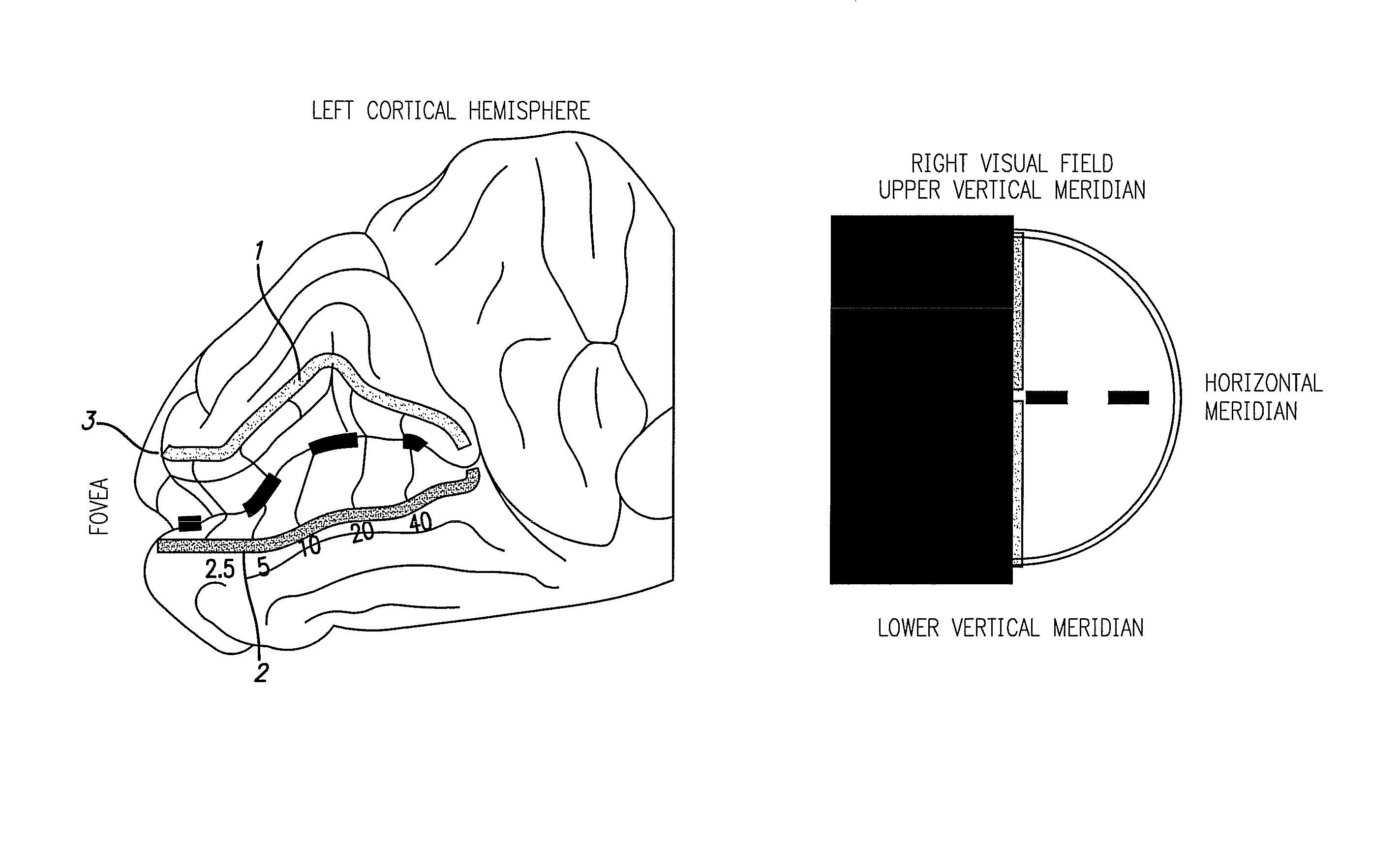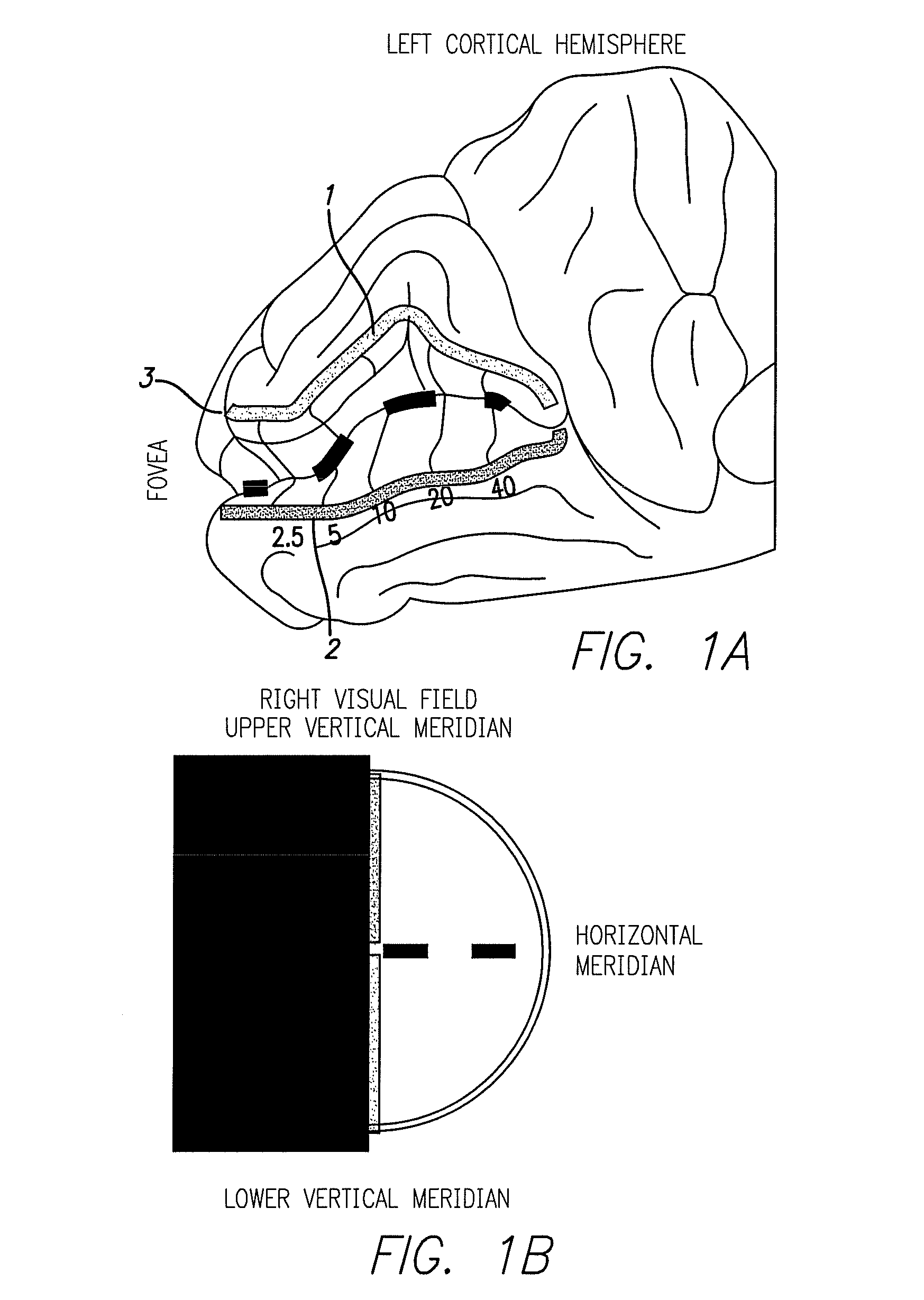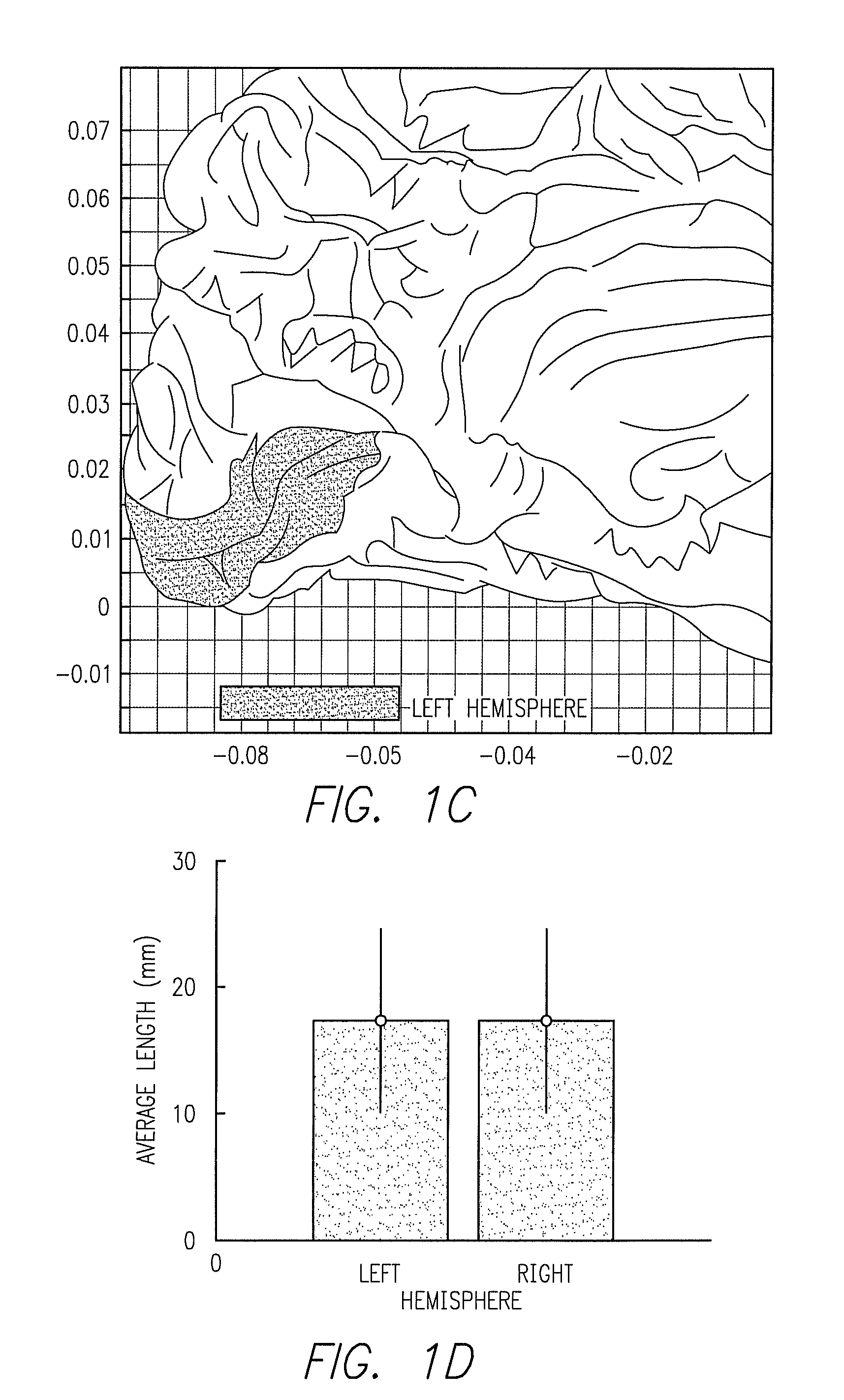Cortical visual prosthesis
a visual prosthesis and cortical technology, applied in the field of cortical visual prosthesis, can solve the problems of diabetic retinopathy, vision loss, blindness currently incurable,
- Summary
- Abstract
- Description
- Claims
- Application Information
AI Technical Summary
Benefits of technology
Problems solved by technology
Method used
Image
Examples
Embodiment Construction
[0032]The following description is of the best mode presently contemplated for carrying out the invention. This description is not to be taken in a limiting sense, but is made merely for the purpose of describing the general principles of the invention. The scope of the invention should be determined with reference to the claims.
[0033]FIG. 1A, shows the left side of the back of a human brain as seen from the medial longitudinal fissure. It is opened up for visibility. The fovea 4 in the back of the head maps out the central visual field. Mappings of the Lower vertical meridian 1, Upper vertical meridian 2 and Horizontal meridian 3 (dashed), of the right visual field shown in FIG. 1B. FIG. 1C is an example of V1 in left hemisphere of a subject. FIG. 1D is the average length of the left and right calcarine sulcus for 63 subjects. FIG. 1E is a Histogram of the number of length measurements for all subjects left and right.
[0034]Referring to FIG. 2, a polymer-based flexible circuit inclu...
PUM
 Login to View More
Login to View More Abstract
Description
Claims
Application Information
 Login to View More
Login to View More - R&D
- Intellectual Property
- Life Sciences
- Materials
- Tech Scout
- Unparalleled Data Quality
- Higher Quality Content
- 60% Fewer Hallucinations
Browse by: Latest US Patents, China's latest patents, Technical Efficacy Thesaurus, Application Domain, Technology Topic, Popular Technical Reports.
© 2025 PatSnap. All rights reserved.Legal|Privacy policy|Modern Slavery Act Transparency Statement|Sitemap|About US| Contact US: help@patsnap.com



